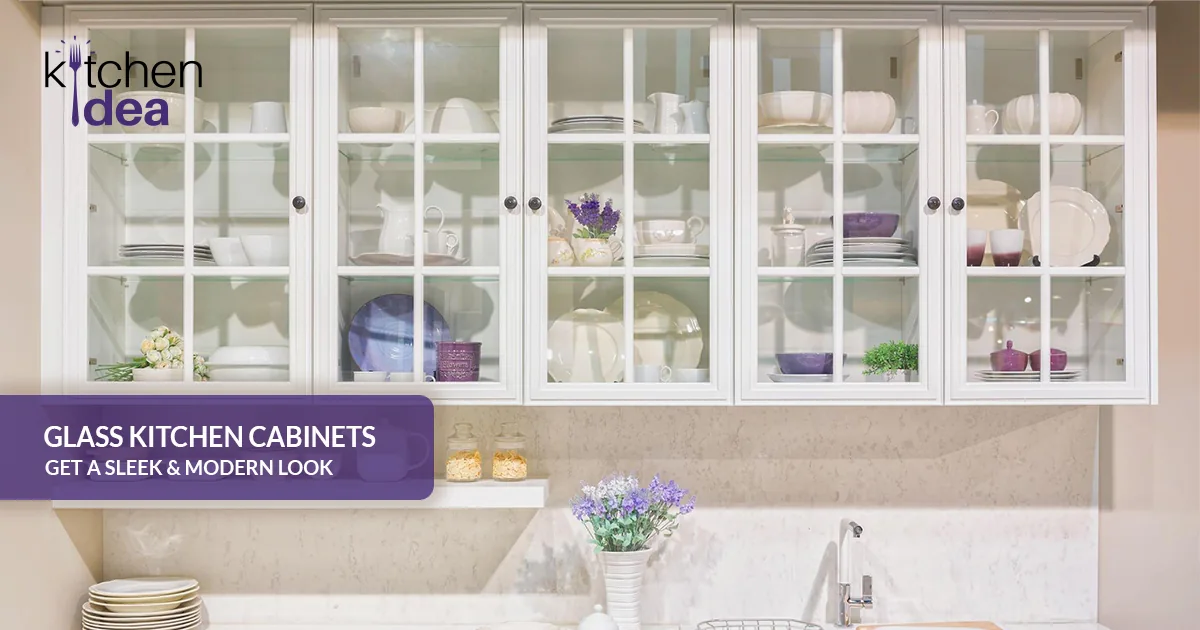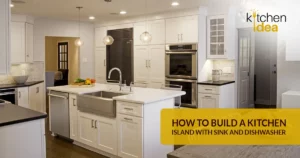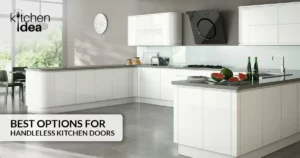Having glass kitchen cabinets is a wonderful incentive to maintain your shelves in order since they are both functional and aesthetically pleasing in equal measure. Glazing is available in a wide variety of styles and thicknesses; thus, if installing a huge area of transparent cabinets is too ambitious for your kitchen, you might consider adding it into the upper portions of your cupboards or the kitchen wall cabinets with glass doors, island for a stunningly sophisticated appearance. The most modern style of glass kitchen cabinets.
When it comes to designing your glass front kitchen cabinets with kitchen wall cabinets with glass doors, the style of your house and your own unique preferences should serve as a solid foundation for getting started. This article will take the time to get to know you and your needs, offering you lots of ideas and inspiration to guarantee that the final product surpasses your expectations.
The use of glass as a surface finish in kitchens is highly recommended. Glazed cabinets not only break up the monotony of repeated, solid-facing doors – particularly in big areas – but they also maximize the flow of light into darker corners. This is because glazed cabinets allow more light to enter. When it comes to showcasing your most valued possessions, having glass-fronted doors is on par with open shelves in terms of effectiveness. They are also wonderful for gaining access to daily necessities since they help you to see what you have and where you have placed items.
Glass Kitchen Cabinets: Pros And Cons
The Advantages And Disadvantages Of Having Glass Kitchen Wall Cabinets
Let’s take a look at the benefits and drawbacks of the glass cabinet design so that we can have a more in-depth understanding of these types of cabinets.
Pros
- There is a wide variety of selections available, such as seeded cabinets, frosted-glass cabinets, and other types of cabinets.
- Glass kitchen cabinets, much like mirrors, reflect light, giving the impression that the room is larger than it really is.
- Glass cabinets are transparent. It makes it easier to locate important dishware in a hurry.
- Because the cabinet type is constructed out of glass that is both stain-resistant and waterproof, it can be cleaned quickly and easily.
Cons
- Glass cabinet doors are brittle. They are prone to cracking and breaking. Cabinets of this kind are not suggested for use in kitchens that see a lot of foot activity.
- The appearance of disorganization is produced when crockery is stacked according to kind and color.
Various Styles for Glass Kitchen Cabinets
There are six distinct kinds of glass that are utilized in the construction of kitchen cabinets. Let’s go through each one and find out why they are unique in their own right.
Brown Frosted Glass cabinetry with Leaded Glass Doors for the Kitchen
The contents of your cabinets will remain hidden behind frosted glass. The aesthetic impact of installing lights beneath the cabinets in your kitchen is one way to improve the space. Fingerprints and stains are difficult to see on the glass.
The appearance of the seeded glass is similar to that of rain falling on upper kitchen cabinets with glass doors’ windows. The cabinet’s contents are easier to conceal thanks to the water effect, which functions similarly to frosted glass. The glass lets you view the various forms and colors of the objects that are stored within the cabinet. Puck lights are a simple accessory that can completely transform the look of your kitchen cabinetry.
Transparent Kitchen Cabinet Glass Doors
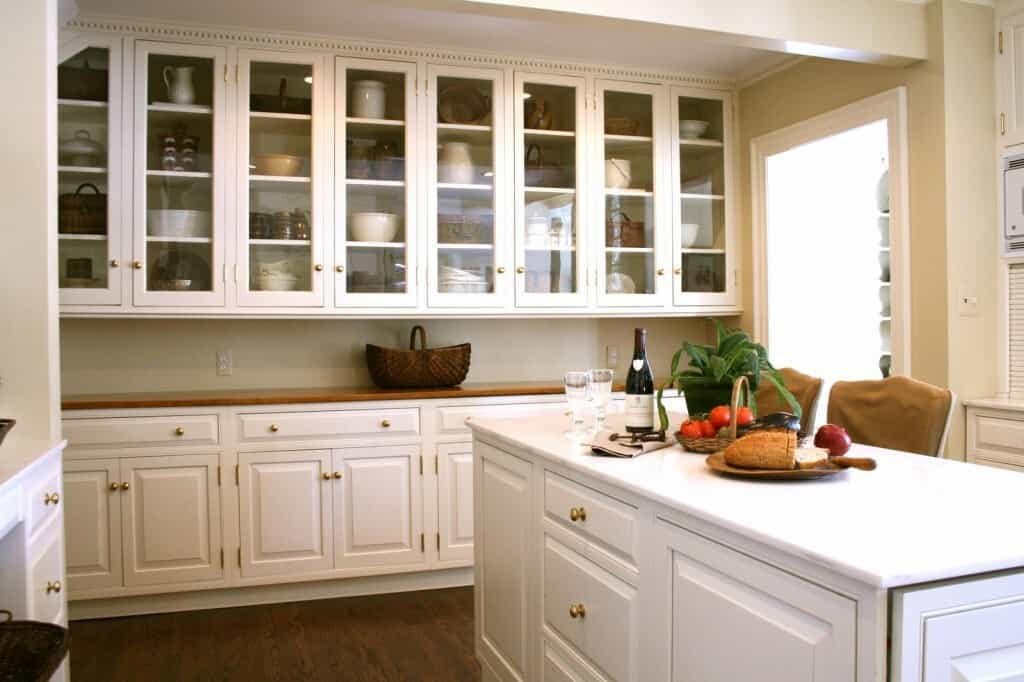
Upper kitchen cabinets with glass doors, that are see-through are not only practical but also appealing. A structure made of a single piece of flat-paneled toughened glass that is meant to guard against simple shattering or a beautiful pattern that will improve the look of your kitchen cabinet. Glass that is transparent may be purchased in a variety of colors and is quite affordable.
Cabinet Glass with a Textured Surface
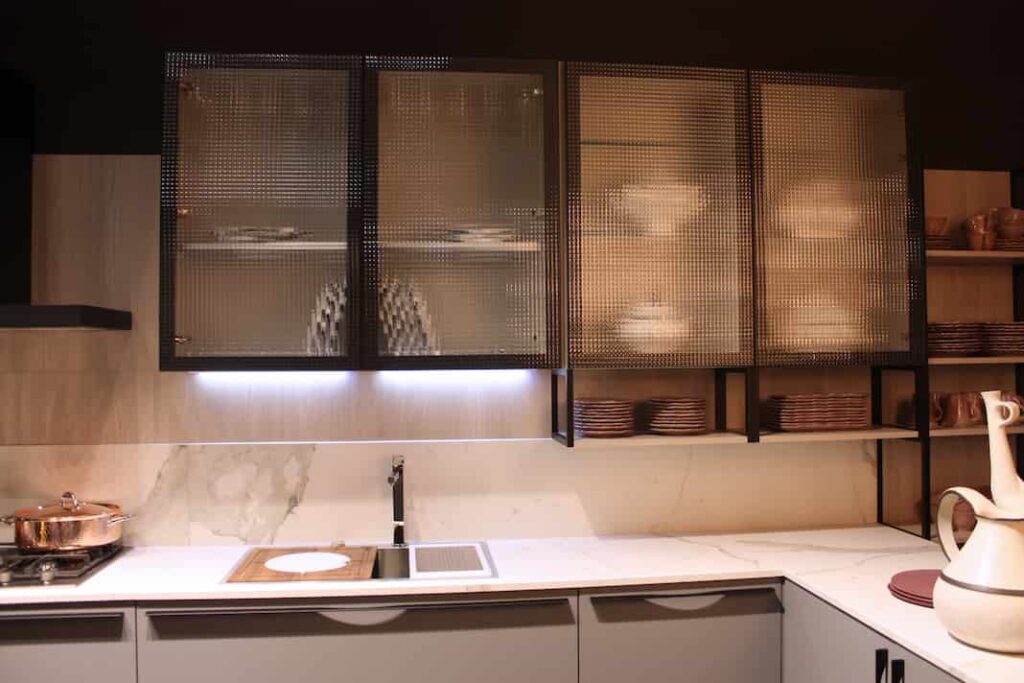
The use of textured glass gives this design an old-fashioned appearance. Glass for the cabinets in your kitchen may be custom-made with a variety of textured surfaces to suit the aesthetic of your space. In contrast to other types of glass, these ones provide the impression that the room is larger.
Glass with Lead Inlay
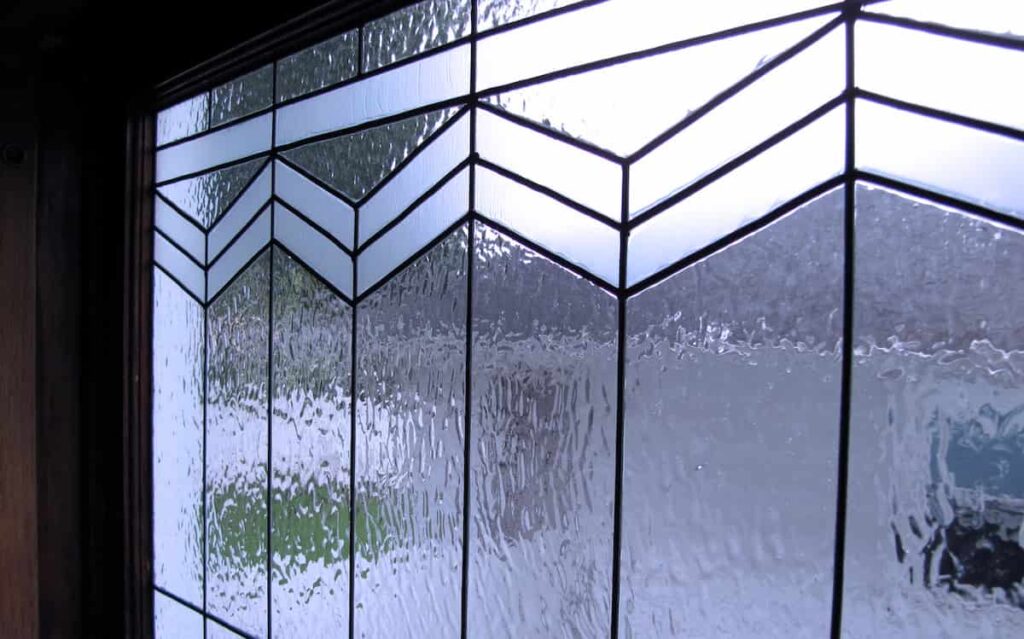
In this particular illustration, the crystal characteristics of the provincial cabinets are brought out by the use of leaded glass. Leaded glass, which also goes by the name crystal glass, is characterized by its distinct look due to the inclusion of slivers of connected glassware.
Stained glass, beveled glass, or clear glass may be used to make leaded glass. As a result of the high lead concentration in the glass crystals, the index of light refraction is much lower than that of conventional glass. The location, color, and artistic style may all be included in the design of the glass.
Design for a kitchen in Sumiglass Brown, with Leaded Glass Cabinet Doors
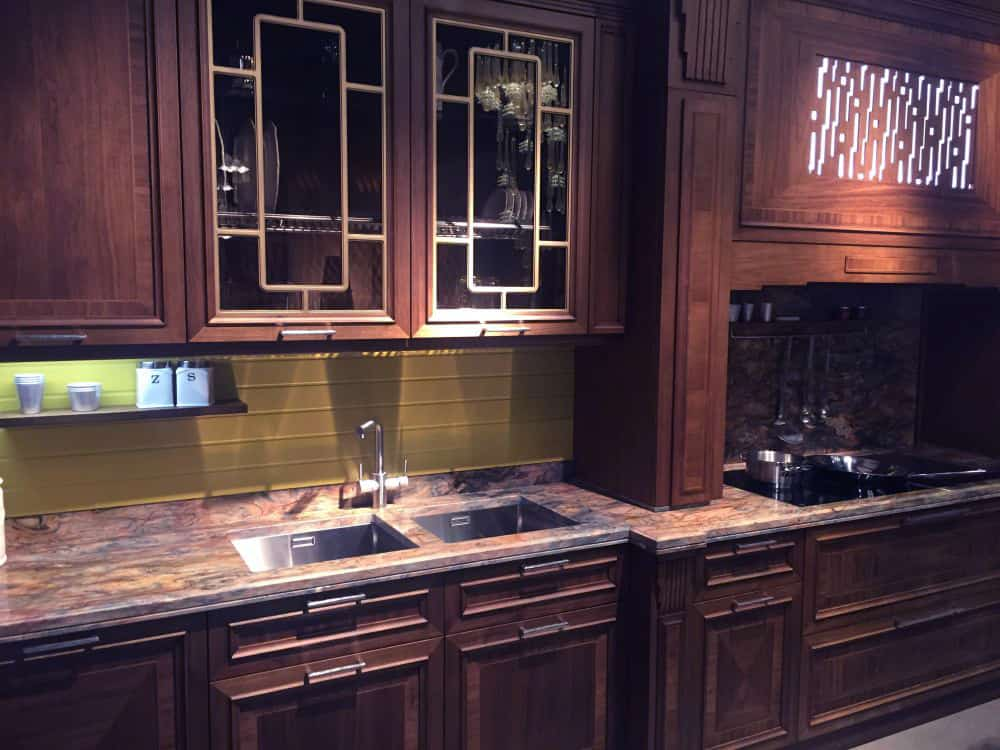
The beautiful look of Sumiglass is due to its many layers of crushed materials, with each layer consisting of at least two panes of glass. These layers give the substance a layered appearance. The cutting-edge technique produces a connection that is both strong and long-lasting between the panes of glass. The fabric is available in a number of different hues. It is possible to personalize it to create a trendy look for the inside of a kitchen.
Transparent Glass Cabinets
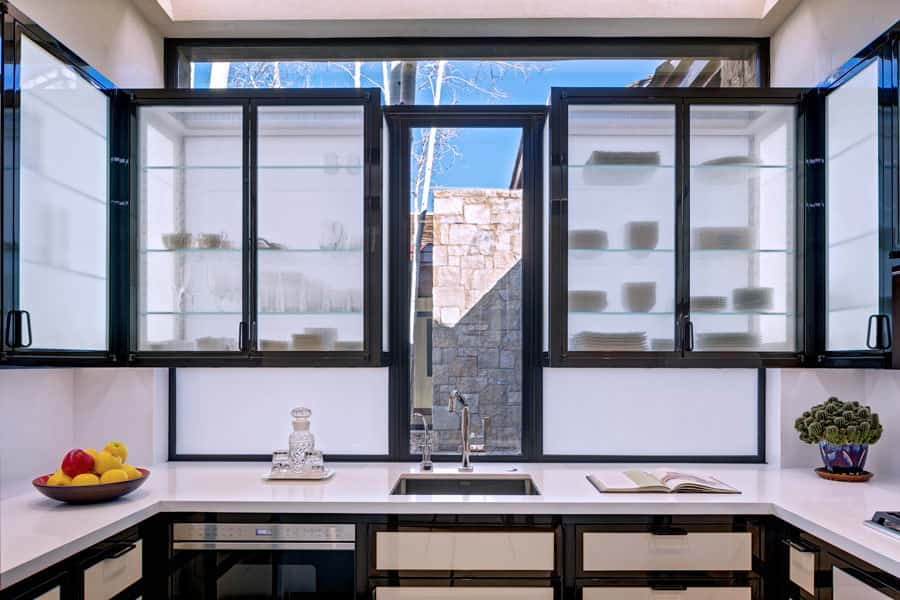
Your cabinet goods will always be seen thanks to a cabinet system made of clear glass. Others may see this as a benefit, despite the fact that it could appear to others as an annoyance. You are able to exhibit your dinnerware while yet safeguarding it by storing it in upper glass kitchen cabinets that have doors made of clear glass. Additionally, glass is an excellent option for smaller kitchens and works well in environments that have a minimalistic design aesthetic.
The Quick and Easy Guide to Replacing the Glass on Cabinet Doors
In kitchen glass wall cabinets, the glass may often be accessed via a panel that can be removed. It works well for fixing broken or shattered glass as well as for cleaning the inside of the vehicle.
- Hardware for Glass Cupboards
- Screwdriver
- Safety gloves
- Putty knife
- Chisel
- Clear silicone
1. Carry out an inspection and unscrew the screws.
To begin, open all of the glass kitchen cabinet doors and carefully examine both the left and right sides of each glass panel. There ought to be a screw that is protruding from the cabinetry. Take out the screws and adjust them so that they are parallel to the frames.
2. Take off the Hinges
Second, loosen the hinges with a screwdriver. Remove the screws that secure the hinges to the cabinet and the glass door if the glass is embedded in the cabinet door. If the glass is not embedded in the cabinet door, leave the screws in place. If there are no sticks or screws keeping the panels in place, you may remove the hinges.
3. Take Away the Cabinet’s Frame
Third, tap the panel from the inside of the glass kitchen cabinet doors to loosen it from the frame of the cabinet. On a clear work surface, it should be positioned face down.
4. Remove Glass
In kitchen glass cabinets, pry the molding that surrounds the glass with the tip of the putty knife to remove the brads. The molding may be found on both sides of the glass. To remove the panel, first, insert the knife between the panel’s sides and the molding, and then gently pull it out. When the molding is pried free enough, use the knife to pry it away from the frame where it was attached. Bring in each of the four sides.
5. Remove Debris
For, kitchen glass wall cabinets, to clean up the dirt and chips, you may use a chisel. You may get rid of the dirt by using a scraper. Putting the glass back in its cabinet is all that is required to replace it.
6. Put some silicone on it
Make a hole at the end of a tube of clear silicone by cutting it off with a utility knife in kitchen glass cabinets. Create a hole with a diameter of 3/8 inches by cutting it diagonally. Ensure that the diagonal end of the tube is kept at the location where the glass and wood meet. While maintaining pressure on the silicone tube, apply a bead of silicone that goes all the way around, making sure that it contacts the side of the frame and the glass.
7. Apply Slight Force To The Glass
Use some force to push down the glass. Wait twenty-four hours for the silicone to completely dry. Be careful to rotate the sticks or screws so that they are perpendicular to the cabinet frame before reattaching the glass panel to the cabinet.
Conclusion About Glass Kitchen Cabinets
The relationship between form and function in design should be carefully considered. When the items you use are out on the show, it is crucial to maintain the things that are useful within reach while also keeping the things that are attractive in view. Make sure that your display items are symmetrical by using the “odd numbers” guideline. For instance, if you have a collection of five or three pieces of pottery, candles, or vases, position the item that is the tallest in the center of the shelf, and arrange the objects that are shorter on each side of it.
When you stack bowls or plates, maintain the topmost stack in the center to create a visually harmonious flow. This works whether you’re stacking bowls or plates. Cookbooks that are arranged on open shelves or behind glass-fronted cabinets and are arranged according to height or color look fantastic.
FAQ About Glass Kitchen Cabinets
What Glass Is Best For Kitchen Cabinets?
Plain, translucent glass is a time-honored, fail-safe material that is also abundantly accessible. Choose a tempered design to prevent breaking. You may use single flat panels, like in this kitchen, or ornate mullions to improve the style of your kitchen.
How Much Do Glass Front Cabinet Doors Cost?
It is quite expensive but mostly depends on the brand and the look of the glass you’re choosing along with the type of the glass.

